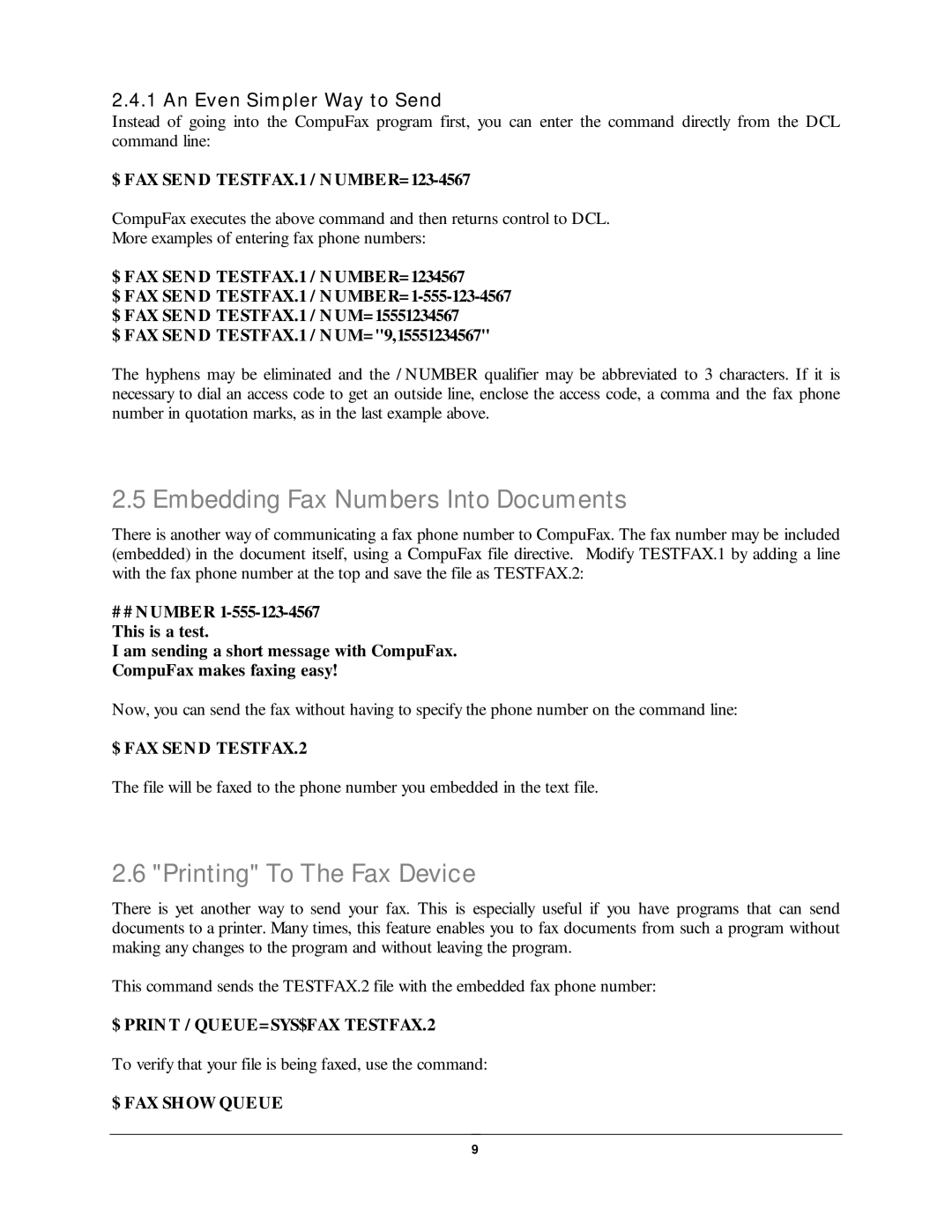2.4.1 An Even Sim pler Way t o Send
Instead of going into the CompuFax program first, you can enter the command directly from the DCL command line:
$ FAX SEN D TESTFAX.1 / N UMBER= 123-4567
CompuFax executes the above command and then returns control to DCL.
More examples of entering fax phone numbers:
$ FAX SEN D TESTFAX.1 / N UMBER= 1234567
$ FAX SEN D TESTFAX.1 / N UMBER=
$ FAX SEN D TESTFAX.1 / N UM= "9,15551234567"
The hyphens may be eliminated and the / NUMBER qualifier may be abbreviated to 3 characters. If it is necessary to dial an access code to get an outside line, enclose the access code, a comma and the fax phone number in quotation marks, as in the last example above.
2.5 Embedding Fax Numbers Into Documents
There is another way of communicating a fax phone number to CompuFax. The fax number may be included (embedded) in the document itself, using a CompuFax file directive. Modify TESTFAX.1 by adding a line with the fax phone number at the top and save the file as TESTFAX.2:
## N UMBER
I am sending a short message with CompuFax. CompuFax makes faxing easy!
Now, you can send the fax without having to specify the phone number on the command line:
$ FAX SEN D TESTFAX.2
The file will be faxed to the phone number you embedded in the text file.
2.6 "Printing" To The Fax Device
There is yet another way to send your fax. This is especially useful if you have programs that can send documents to a printer. Many times, this feature enables you to fax documents from such a program without making any changes to the program and without leaving the program.
This command sends the TESTFAX.2 file with the embedded fax phone number:
$ PRIN T / QUEUE= SYS$FAX TESTFAX.2
To verify that your file is being faxed, use the command:
$ FAX SHOW QUEUE
9
